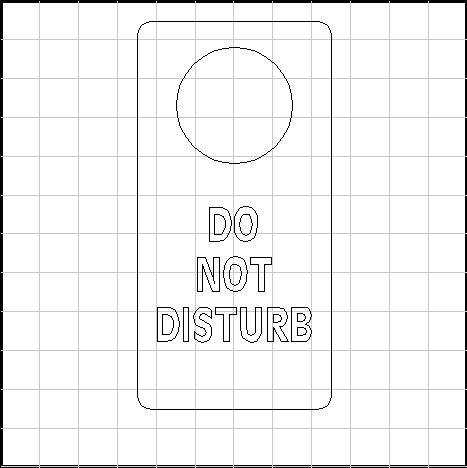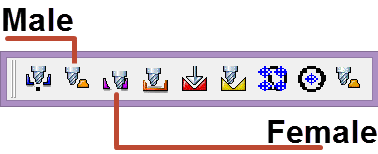In rotary engraving, male and female tool paths are used for cutting materials. Understanding the difference between the two is essential.
When cutting a male tool path, the cutter comes down on the outside of the part to ensure that the dimensions of the final product, width and height, will be as designed.
When cutting a female tool path the cutting tool comes down on the inside of the part so that the hole in the part has the width and height as designed.
To illustrate this point, let’s take a look at this “Do Not Disturb” sign.
In this example, the final product must be ten inches in height and five inches wide. The circle cut out must be three inches in diameter.
In order to create this part a male tool path will be applied to the outside of the part and female tool path to the circle.
Applying Tool Paths
In the Vision Expert or Vision Pro software, select the object to apply the tool path to, then, on the Tools toolbar, select “Tool Path Tools.”
When applying the tool path it is important to select the cutting tool and enter the depth of the cut (even when using a proximity sensor). Doing allows the software to take into account the geometry of the tool so that the tool path will be applied correctly.
The male tool path is applied to the outside of the part (red), the female tool path is applied to the cut out (green).
The male tool path is slightly outside of the part and the female tool path is slightly inside of the cut out because the software knows the geometry of the tool.
The final product is exactly five inches by ten inches with a three inch diameter cut out.




